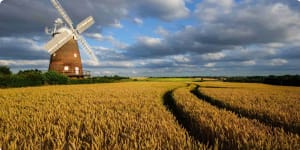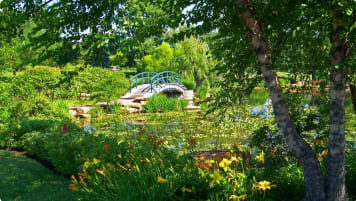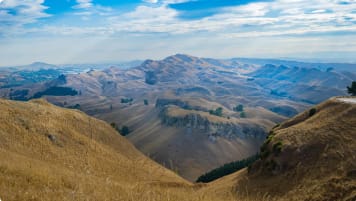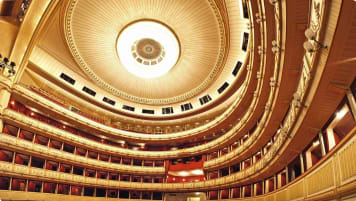Agrarian and Industrial Britain | Small Group Tour for Mature Travellers
A small group tour of England that will explore the history of Agrarian and Industrial period. An escorted tour with a tour director and knowledgeable local guides take you on a 22 day trip to key places such as London, Bristol, Oxford & York, where the history was made.
From A$17,275AUD
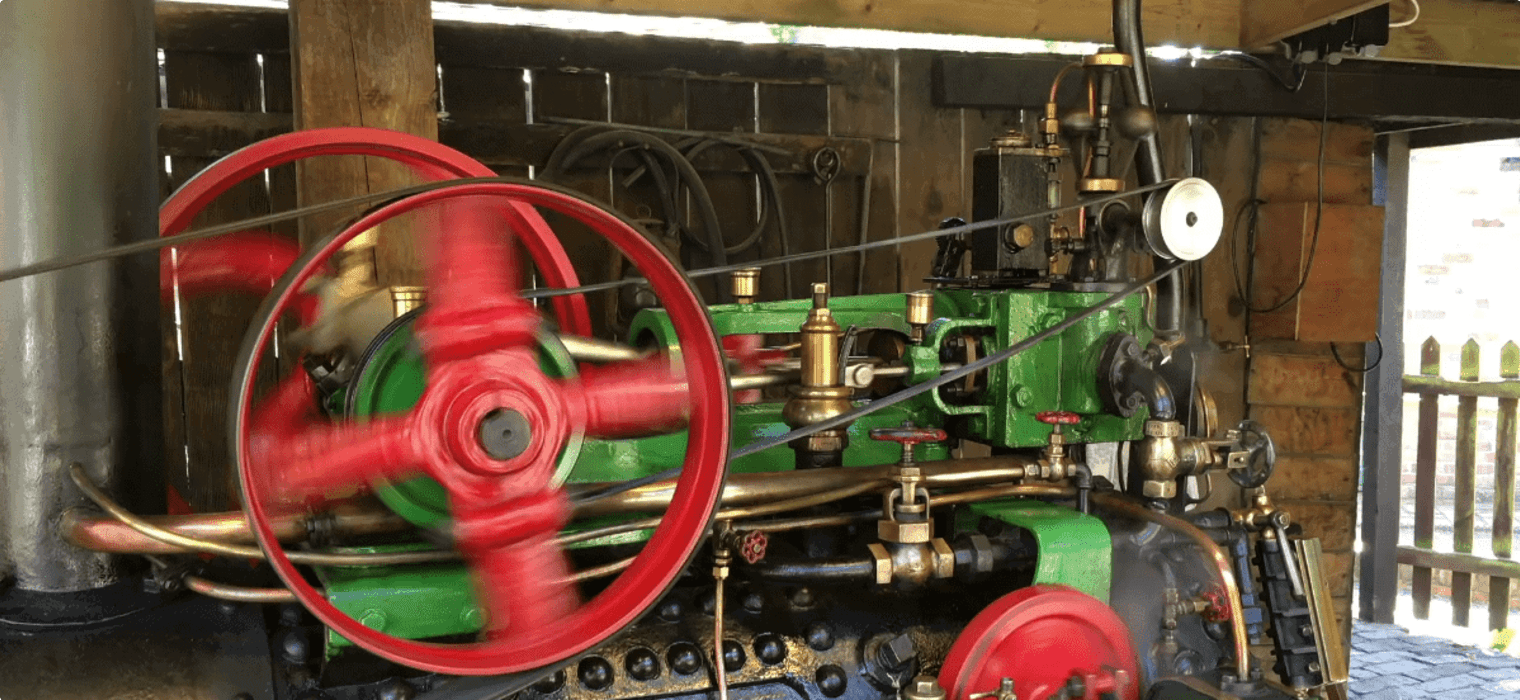
Highlights
- 1. Study the estuary forts of the Thames, the Viking centre, and the National Canal Museum to learn about their history.
- 2. Tour many of the heritage-listed historic buildings and structures that shaped Britain.
- 3. Visit Seaside sites in Kent and Sussex to learn about the Martello Towers as a means of defense.
- 4. Understand the influence of the Romans and Normans in Britain.
Departure Dates
| Departure Date | Price |
|---|
Tour of Agrarian and Industrial Britain
Odyssey offers easy, convenient, and relaxed escorted small group tours across Britain and beyond. We explore Britain's manicured beauty, its ancient Roman, and Industrial heritage, its World Heritage Sites, and world famous cities, all with some truly spectacular scenery along the way. This and more is all waiting to be explored on one of Odyssey’s small group tours of Britain, designed for the senior traveller, and led by experienced, and enthusiastic like minded people.
This is an escorted small group tour for 23 days that focuses on two major elements of British history: the Agrarian Revolution and the Industrial Revolution. This small group tour explores critical elements of these revolutions and the impact that they had on the Great Britain we know today. This is a tour designed for the mature couple or solo traveller who is looking for an adventure that combines a fascinating history with beautiful scenery and unique landmarks.
Tour Background: Britain and the Revolutions
The Agrarian or Agricultural Revolution completely reshaped British society and changed the way that people lived. Although it was a gradual transformation that took place over centuries, an unorganised organic agricultural was slowly replaced by an innovative farming system that required intensive labour and resulted in people see land and food in a new way. Some people cite the beginning of the Agrarian Revolution in the 1500s but the changes did not accelerate until mid-17th century. A significant change brought about in this time was the idea of enclosure, where large tracts of previously open land were fenced in. One of the developments associated with this time is the Norfolk four-course rotation, a method of agriculture that involves growing different types of crops in the same area over sequential seasons to help prevent the likelihood of pathogens and pests that can occur when one plant species is continuously cropped. This practice restored the fertility of arable land. Later in the mid-18th century, selective breeding was introduced in order to produce high quality beef. These are just a few of the changes that saw an unprecedented increase in agricultural production in Britain. Agriculture came to dominate the British economy over these centuries in a society where the aristocracy and landed-gentry owned much of the countryside and tenants farmed the land and reared livestock. However, while the Agrarian Revolution had wide-reaching impacts on British life, more dramatic change came with the Industrial Revolution.
In the late 18th and 19th centuries, population growth combined with an increase in foreign trade saw a move away from agriculture and a growing demand for manufacturing. Many people moved away from the countryside due to a surplus of agricultural labour and headed to the cities to find work. With technological advancements, animal power was replaced by steam power, the spinning of cotton into threads was revolutionised and the weaving process was streamlined. This saw the establishment of large factories and an increased flow of capital into the British economy which meant that the country's infrastructure changed immensely. Important transport networks were established, including the creation of the canal and railway systems across the country. It this time period that saw Britain cement its place as a world leader.
The Itinerary
During your tour of Britain as part of this small group you get to visit the remnants of many of these industrial-related structures preserved in the landscape and cities of today. On this tour, designed for mature couples and solo travellers with a passion for learning, you will visit some of the wonders of the revolutions and key locations recognised as iconic landmarks of British history. Our journey begins in the nation's capital in London on a tour of quaint villages seeped in history. Not only will you witness beautiful scenery, from Roman ruins to medieval architecture and breathtaking cathedrals but you will also learn about different local histories and how these revolutions shaped individual towns and cities across Britain.
Highlights of the Agrarian and Industrial Britain small group tour include time learning about the influence of the Romans, Vikings and Normans in Britain. This is realised by guided visits to places such as the Viking centre, and the National Canal Museum. We also enjoy walking tours of Bristol, Liverpool, and Manchester and the estuary forts of the Thames, to learn about their role in defining modern Britain, and discover more about the influence of the Romans and Normans in Britain.
If you want to get more out of your vacation and uncover a new side of British history, then this is the holiday for you. The Agrarian and Industrial Britain tour will give you an amazing insight into the development of what was one of the world's greatest powers.
The Agrarian and Industrial Britain small group tour also has a sister tour: Britain's history through its canals and railways. Odyssey offer travellers two departures each year of this tour.
Invaders, Revolutions & Icons of Britain
If you'd like to learn more about touring Great Britain, read our blog post about travel tips for seniors here!
If you're looking to read up, check out this great list of fifteen books about Britain's industrial revolution!
For an overview of some of the incredible personalities that contributed to the revolution, check out this blog post!
For more details, click the ‘Top 5’ or ‘Itinerary’ buttons above! If you’re keen to experience this tour, please call or send an email. Or, to book, simply fill in the form on the right hand side of this page.
About Odyssey Traveller
We specialise in educational small group tours for seniors, typically groups between six to 12 people from Australia, New Zealand, USA, Canada and Britain. Our maximum number of people on a tour is 18 mature aged travellers.We have some 150 tours and offer 300 scheduled departures on offer each year. Odyssey has been offering this style of adventure and educational programs since 1983.
Odyssey Traveller is committed to charitable activities that support the environment and cultural development of Australian and New Zealand communities.
Odyssey Traveller scholarship for Australia & New Zealand University students.
We are also pleased to announce that since 2012, Odyssey has been awarding $10,000 Equity & Merit Cash Scholarships each year. We award scholarships on the basis of academic performance and demonstrated financial need. We award at least one scholarship per year. We’re supported through our educational travel programs, and your participation helps Odyssey achieve its goals. Students can apply for the scholarship by clicking on this link to find out more details.
Join our loyalty program when you join an international small group tour.
Every International small group tour taken typically contributes to your membership level in our Loyalty Program for regular travellers. Membership of the alumni starts when you choose to take your first international small group tour with Odyssey Traveller, discounts in tour pricing for direct bookings accrue from your third tour with Odyssey Traveller. To see the discounts and benefits of being a Bronze, Silver, Gold, and Diamond alumni member with us, please see this page.
For more information on Odyssey Traveller and our educational small group tours, visit and explore our website., remember to visit these pages in particular
- Terms and conditions applicable for booking an Odyssey Traveller tour.
- FAQ's about Odyssey Traveller
Alternatively, please call or send an email.
Gallery
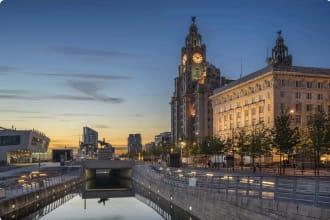
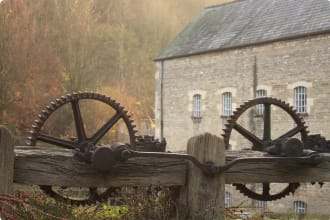

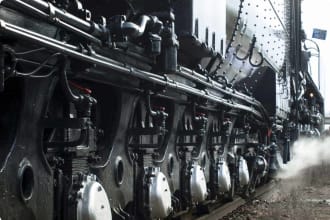
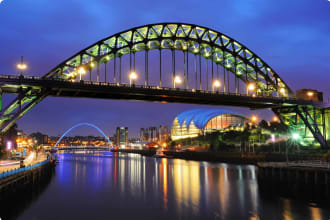
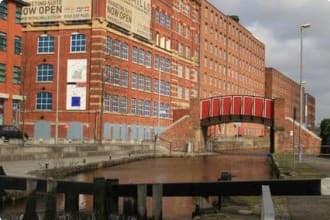

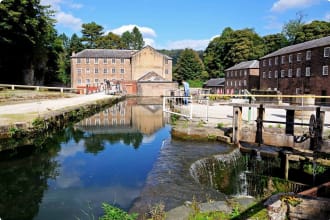
Itinerary
23 days
Day 2: London
Accommodation: 2 nights at London Lodge hotel or similar.
During our 2 days in London, the group will travel via public transport vouchers to view London icons including Houses of Parliament, Westminster Abbey, Trafalgar Square, and Buckingham Palace with a local guide.
Day 3: London
Accommodation: London Lodge hotel or similar.
For our second full day in London, the tour visits the Science Museum to see galleries associated with advances in medicine. This will be followed by a visit to the Victoria and Albert Museum of decorative art and design. Saint Paul’s Cathedral and the Tower of London will be included in the itinerary along with a 30 minute rotation on the London Eye.
Day 4: Whistable
Accommodation: 1 night at Falstaff Hotel Canterbury.
In the morning we leave London for Whistable to take a cruise in the Thames estuary on a sailing barge to visit WWII defensive forts. As added WWII protection for London, the Maunsell Forts were constructed in the Thames estuary in 1942. These steel towers have since deteriorated, and while some have been destroyed, others were used by pirate radio operators. At the end of the day we transfer to our accommodation in Canterbury.
Day 5: Canterbury to Rye
Accommodation: 2 nights at George Inn or similar.
During the tour we will travel down the coast with the opportunity to visit 2 Roman sites and one of the cinque port castles built at the most vulnerable points on the coast. We pass through and visit some interesting regions and towns like Romney Marsh, and we will stop at Rye, which is located near the southeast British coastline, facing the English Channel. It is located next to a sea route convenient for shipping coming out of the Mediterranean and from the North Sea. This strip of land in Kent and Sussex, which runs northeast from Hastings, became a gateway for invaders and consequently this land needed to be defended by rulers with forts, castles, armored watch towers (Martello Towers), and fortified cliffs. Many of these defenses were required before Britain had a navy to defend itself from threats of sea invasion.
The Romans landed on this coastline at Richborough in AD 43, and the Saxons and the Jutes used it in the mid AD 400s. Many invasions by the Danes and Norwegians occurred here in AD 800 and 900s and the Normans landed just south of Hastings in 1066. Again this coastline was used for defense during the events of WW II but today it serves a more welcoming role for visitors from the Continent.
Later we will visit Pevensey and the battle site where William, Duke of Normandy began the Norman Conquest with 7,000 to 8,000 men.
Day 6: Rye & Surrounds
Accommodation: George Inn or similar.
Our guide for the day will teach us about Prevensey and Battle (abbey and battle site), before returning to Rye for a free evening.
Day 7: Portsmouth
Accommodation: 2 nights at Best Western Royal Beach.
From Rye we will follow the coast around to Sompting to visit the Anglo-Saxon Norman church of St. Mary and see its most fascinating tower. At Chichester we will have a special tour as we visit the Fishbourne Roman villa, and on reaching Portsmouth we will visit the historic dockyard with a local guide to see the Mary Rose, HMS Warrior, and HMS Victory.
Portsmouth is on the coast of Hampshire, separated from the Isle of Wight by the Solent, and with its very large harbour and dockyards it has been extremely well connected with Britain’s days of naval greatness. As a naval base it has many specialised facilities such as a very large dry dock and a submarine base. It is the headquarters for the Royal Navy and the Royal Marine Commandos.
There are Roman, Saxon, and Norman links to Portsmouth, and at the end of the 1300s the first permanent fortifications were built here. It was a base for the Parliamentary forces during the English Civil War and the 11 ships of the First Fleet sailed to Australia from here in 1787. The harbour was the launching site for Admiral Nelson’s flagship and today is the resting place for this vessel and several other famous ships. During the Industrial Revolution, Portsmouth figured significantly. It is the birthplace of the famous engineer Isambard Kingdom Brunel and where his father Marc had made several contributions to naval technology.
Day 8: Tour to Winchester
Accommodation: Best Western Royal Beach.
We will travel out of Portsmouth to Winchester to see the Great Hall and Cathedral. We then go on to Chawton to visit the abode of Jane Austen, and complete the day back in Portsmouth visiting Porchester Castle.
Day 9: Chepstow
Accommodation: 2 nights at The Beaufort Hotel or similar.
Travel from Portsmouth will take us northeast to Chepstow via Bristol. On the way we stop at Edington to view the site of battle between King Alfred and the Danes in 878. In Bristol we have a city tour including the harbour area and a visit to SS Great Britain. Bristol is in southwest England on the Avon River and close to the Severn Estuary, a location that allowed this city to develop as a major shipping centre. Unlike Portsmouth, Bristol has strong connections as a commercial port beginning about the 10th Century, and a rich maritime history, including connections with Cabot and Columbus, who sailed from here on their voyages of discovery in the Atlantic Ocean. A sad part of local history is the part Bristol played in the slave trade, and it is estimated that some 2,000 slaving ships were fitted out here in the early 1700s.
During the Industrial Revolution, Isambard Brunel made many local contributions. He connected London to Bristol with the first fast, long distance train service, and he also designed and launched several large pioneer steam ships here and added to his fame by designing the magnificent Clifton Bridge that spans the Avon Gorge. Later our tour will include the Clifton Bridge visitor centre and the eastern side of the Severn Estuary in Wales. In 1966 the Severn Suspension Bridge was completed, allowing convenient road access to Wales via the M4.
Day 10: Chepstow
Accommodation: The Beaufort Hotel or similar.
We will drive to Pumpsaint to visit the Dolaucothi Roman Gold mines. We then visit the Big Pit mining museum in Blaenavon and make our way back to visit the Roman baths and fort at Caerleon. We will finish the day with a visit to Chepstow castle.
Day 11: Oxford
Accommodation: 2 nights at Mercure Eastgate Hotel.
From Chepstow we will drive east to observe the Uffington White Horse, a white hillside image originally created in the Iron Age. We will then drive south to visit the Rural Life Museum in Reading to hear about aspects of the Agricultural Revolution from an archivist. We will learn about changes in farm machinery during this period.
Just north of Oxford is the town of Woodstock, where we will visit Blenheim Palace. The palace was built for John Churchill, the 1st Duke of Malborough, and Sir Winston Churchill, as the grandson of the 7th Duke also resided here. The magnificent grounds of the palace were initially designed by Capability Brown one of the outstanding landscape gardeners of the 1700s who became known as the “Landscape Architect of England.”
Day 12: Oxford
Accommodation: Mercure Eastgate Hotel.
Today on our Oxford walking tour, we will visit sites in Oxford with a local guide. Oxford is located in Oxfordshire, northwest of Greater London within a region known as the Home Counties. The Rivers Cherwell and Thames run through Oxford, and the Oxford Canal crosses the northern part of Oxfordshire, following the River Chirwell for much of its way and connecting with London via the River Thames. Oxford is often known as the city of dreaming spires, after the stunning architecture of the University’s historic buildings. This ‘dreaming spires‘ term was coined by the the 19th century British Poet Matthew Arnold, and remains a popular epithet to Oxford today. Nearby Oxfordshire too, is renown for its beauty, with its picturesque cotswolds villages, and medieval architecture characterising the Cotswold region.
We will visit some of Oxford‘s colleges at this stage of our small group tours University of Oxford is the site of the first university in England. Today the university includes 38 colleges, several halls that house students as well as tutorials, academic lecture rooms, laboratories, and research centres. On this walking tour, we will also visit the Bodleian Library, which is the second largest library in Britain and serves mainly as a reference library with book storage in many buildings in Oxford University. It also serves as a Legal Deposit library so it receives and holds copies of many newly published books in Great Britain and Ireland. A walking tour is one of the best ways to explore Oxford, with the historic campus spanning multiple locations across the city. This organic sprawl and of cobbled streets makes a walking tour one of the best ways to appreciate Central Oxford, as well as the city’s historic Oxford University.
We will visit the Ashmolean Library and take a short cruise on the Iffley Lock. Iffley is a small village/suburb of Oxford on the River Thames where the river (also locally known as the Isis) has been dammed by a weir and lock to improve river navigation. The commercial function of the weir and lock has now given way to recreational canal boats with the upstream section of the Isis suitable for rowing.
Day 13: Buxton
Accommodation: 3 nights at Old Hall or similar.
Upon leaving Oxford, we will travel northwest to Stoke on Trent for a tour at the Wedgewood visitor centre to hear about the pottery industry. We then travel north to Macclesfield to the Paradise Silk Mill, one of many mills that carried a cottage industry through the Industrial Revolution to the 1900s and modern times. We finish the day with a short drive to our accommodation in Buxton.
Buxton is a town located within the Peak District National Park and from here the tour will concentrate on sites including those from the Stone Age, the Great Plague, and the Agricultural and Industrial revolutions. We will also visit 2 magnificent historic residences.
The Derwent River Valley between Matlock and Belper served as an early source of power for manufacturing and was connected to major canals for the import of raw materials and the distribution of finished product. This valley is home to many cotton and silk mills that were established early in the Industrial Revolution. The substantial remnants of the mills and associated townships that were developed here are preserved as another British World Heritage Site.
Day 14: Buxton
Accommodation: Old Hall or similar.
On the first day out of Buxton, a local guide will join us to visit parts of the Peak District. We will visit Eyam, which is a small village in the Peak District National Park with connections to a Roman mining area and to the Anglo-Saxons. In 1665 the township played an interesting but devastating part during the bubonic plague and it is often referred to as a Plague Town. Eyam is surrounded by pasture lands with the heather covered Eyam Moor to its north. The local pub, The Miners Arms, was established in 1630, its name relating back to local lead mining industry. Haddon Hall is described as one of the best-restored English medieval manors and is charming both inside and outside in its terraced garden. Most of the buildings surrounding the 2 courtyards date from the mid 1200s through to 1600s. Haddon Hall was originally owned by the Duke of Chatsworth but was granted to the National Trust that now manages the property. We will also visit a late Neolithic Stone Age, Arbor Low stone circle. During the day we also visit Tissington to see evidence of the old style of agricultural cultivation.
Day 15: Buxton
Accommodation: Old Hall or similar.
On the second day from Buxton, we visit sites associated with mills and townships in the Derwent Valley, including Cromford and Belper with some free time later to explore in Buxton.
Day 16: Buxton to Lincoln
Accommodation: 2 nights at The Old Palace Hotel or similar.
We will make several stops during our travel east from Buxton to Lincoln. The first stop is to visit the famous Chatsworth House, a grand, stately manor house built in the 1560s, rated as one of England’s iconic country houses with about 25 of its 126 rooms open to the public. In its earlier days it was home to several generations of the Duke of Chatsworth. The house has been the subject of a BBC documentary and the filming site for several movies and TV series. It is located on the Derwent River and its gardens and grounds have been fashioned by several famous landscape gardeners including Capability Brown.
We will have some free time in the nearby village of Bakewell, then visit Abbeydale Industrial Hamlet in Sheffield. Sheffield grew mainly out of the steel industry during the Industrial Revolution, but the traditional local industry declined in the 1970s and 80s. The Abbeyfield Industrial Hamlet is a working museum that reflects the period from 1714 to 1876.
Day 17: Lincoln
Accommodation: The Old Palace Hotel or similar.
The many visits in Lincoln include time to see the Fossdyke at Torksey, the Castle (and hopefully a copy of the Magna Carta) and Joseph Banks Conservatory, the Cathedral, and the Usher Gallery and Collection.
Lincoln is located in County Lincolnshire, in the north midlands of England. The city is built about a gap in a long high ridge, the Lincoln Edge, through which the River Witham flows. The Romans built a colony here in AD 46 before they moved on to establish York. A fortress was built on the hill with other buildings situated downhill near the river. The Romans also dug a canal, the Fossdyke, that joined the River Witham to the River Trent at the Brayford in Lincoln. This allowed inland boat access to the sea via the Witham.
In 1068 William the Conqueror chose the former Roman fort site for a castle fortress and the first cathedral was built close-by some 30 years later. Fire damage, an earthquake, and expansion has led to the development of the current magnificent three towered Cathedral Church of the Blessed Virgin Mary of Lincoln. In 1215 the rights of the king were to be limited by the Feudal Barons with the writing of the Magna Carta, a document that was to later form the basis of British constitutional law. The Bishop of Lincoln was one of the witnesses to this document so Lincoln Castle now holds one of the remaining 4 copies of the of the original Magna Carta.
Day 18: York
Accommodation: 2 nights at Hotel 53 or similar.
Our journey to York from Lincoln will take us via the Humber River Bridge to Stamford Bridge, where Harold was victorious over the Vikings. We then travel on to York where we visit the York Castle Museum with its eclectic collection of exhibits and displays, before checking into our accommodation. The remainder of the day is free.
York is a major city in northeast England and has played a major role in British history since the Romans invaded Yorkshire in AD 71, defeated the local Brigantes tribe, and established their northern capital, Eboracum. After the Romans, the Angles settled here in the 5th Century. The first minster church was established in the 7th Century and the Vikings raided here then settled in the mid 800s, when it became known as Jorvik. The centre felt the effects of the Norman conquest in 1068, just 2 years after William’s landing. Although there were some periods of decline, York was to prosper during the 12th Century as a trading centre. During the early and mid 1600s, there were many changes resulting from the Dissolution of the Monasteries and the Civil War, but York was to prosper as a wealthy city and a major cultural and social centre.
This part of Britain saw a resurgence and rebirth after union of Crowns of Scotland and England in 1707 and the innovations of the Agricultural Revolution were adopted. Since the Industrial Revolution, York has become a focal point for railways and roads, and the River Ouse remains as a navigable route to the sea. It was a here that Rowntrees and Terry’s manufactured their confectionary, and in more recent times York and its surrounding countryside attractions have become a tourist focal point.
In York we will see Roman/Medieval wall and gates, the spectacular Minster, the Merchants Adventurers hall, the underground Yorvik Viking Centre, the castle, streets like the Shambles, and of course in many museum displays. So rich is York historically the entire city centre has been designated as a World Heritage Site.
Day 19: York
Accommodation: Hotel 53 or similar.
Our second day in York begins with a half day guided tour of the main city highlights and entrance to the Jorvik Centre. The afternoon is free with the option of visiting the York Museum with display material mostly from the time of Roman occupation.
Day 20: To Manchester via Ripon
Accommodation: 3 nights at Novotel Center or similar.
On the day we leave York for Manchester, we travel out to Ripon to visit Fountains Abbey and Studley Royal gardens. We will spend a short time in Harrogate before travelling to Harewood House for a visit, then complete our journey west to Manchester.
Day 21: Manchester
Accommodation: Novotel Center or similar.
In Manchester we have a guide for the day. We will take a short journey to see Miles Platting and Victoria Mill next to the Rochdale canal. The second half of the day involves a visit to Salford Quays to the refurbished Manchester dock area, which serviced international ships that reached here from the Irish Sea via the Manchester Ship Canal. The canal system however had a short history and was overtaken through the establishment of the railway system.
We will walk in the Castlefield area to see Roman fort ruins. In AD 40s the Romans set up a community and a fort here to protect their interests from the local Celtic tribe, the Brigates. We end the day at the Museum of Science and Industry, which traces the important role Manchester played in the manufacture of yarn and cloth from imported raw cotton.
Day 22: Manchester
Accommodation: Novotel Center or similar.
The last day of programmed activities takes us down the Mersey to Ellesmere Port, which handled goods transported via the canal system, and is located on the south bank of the Mersey River. We will have a guided tour of the National Waterways Museum, which is a living museum that presents a comprehensive insight into the age when canal boats were important for the distribution of coal, salt, pottery ware, and many other goods.
We then move to the Liverpool side of the river for a local city tour, followed by a walk around the Albert Dock Complex, which was built to receive and store valuable imported goods such as brandy, cotton, tea, silk, tobacco, ivory, and sugar. Albert Dock along with 3 magnificent Pier Head buildings have been designated as a part of a World Heritage Site. We will take a visit to the Mersey Maritime History Museum, and have time for participants to visit the “Beatles Story.”
Day 23: Manchester
The tour will conclude after breakfast today.
Tour Notes
- Itineraries may change if flight schedules, site availability, and other inclusions have to be amended prior to departure.
Includes / Excludes
What’s included in our Tour
- 22 nights of hotel accommodation.
- 22 breakfasts and 12 dinners.
- Transport and field trips as indicated.
- Transport in comfortable and modern coach.
- Gratuities and necessary tips.
- Services of a Tour Leader for the duration of tour.
What’s not included in our Tour
- Items of a personal nature such as telephone calls and laundry.
- Comprehensive travel insurance.
- International airfares and departure taxes.
Participants must be able to carry their own luggage, climb and descend stairs, be in good health, mobile and able to participate in 3-5 hours of physical activity per day, the equivalent of walking / hiking up to 8 kilometers per day on uneven ground.
Book now
Make it a private tour
Easing your journey
Crossing international borders with restrictions
The list of requirements to travel internationally has changed and will continue to change for several years. Odyssey is here to assist you in managing your way through these requirements:
For more information see our Crossing international borders with restrictions page.
Book With Confidence
If less than 30 days before your tour starts you are unable to travel as a result of Government travel restrictions, Odyssey Traveller will assist you with a date change, provide you with a credit or process a refund for your booking less any non-recoverable costs.
See Terms and conditions for details.
Peace of Mind Travel
The safety of our travellers, tour leader, local guide and support staff has always been our top priority and with the new guidelines for public health and safety for keeping safe for destinations around the world, we’ve developed our plan to give you peace of mind when travelling with us.
See Peace of Mind Travel for details.
Reading List Download PDF
Iron, Steam & Money: The Making of the Industrial Revolution
Roger Osborne
In late eighteenth-century Britain a handful of men brought about the greatest transformation in human history. Inventors, industrialists and entrepreneurs ushered in the age of powered machinery and the factory, and thereby changed the whole of human society, bringing into being new methods of social and economic organisation, new social classes, and new political forces. The Industrial Revolution also dramatically altered humanity's relation to the natural world and embedded the belief that change, not stasis, is the necessary backdrop for human existence.
Iron, Steam and Money tells the thrilling story of those few decades, the moments of inspiration, the rivalries, skulduggery and death threats, and the tireless perseverance of the visionaries who made it all happen. Richard Arkwright, James Watt, Richard Trevithick and Josiah Wedgwood are among the giants whose achievements and tragedies fill these pages. In this authoritative study Roger Osborne also shows how and why the revolution happened, revealing pre-industrial Britain as a surprisingly affluent society, with wealth spread widely through the population, and with craft industries in every town, village and front parlour. The combination of disposable income, widespread demand for industrial goods, and a generation of time-served artisans created the unique conditions that propelled humanity into the modern world.
The industrial revolution was arguably the most important episode in modern human history; Iron, Steam and Money reminds us of its central role, while showing the extraordinary excitement of those tumultuous decades.
Britain's Industrial Revolution: The Making of a Manufacturing People, 1700 - 1870
Barrie Trinder
Barrie Trinder has been a leading expert on industrial history for many years and this is perhaps his most important book to date: a general overview of the industrial revolution across the British Isles. The industrial revolution was one of the defining changes of human history, and it happened in Britain first. It changed radically the way in which goods were made: for the first time large factories were built to house the machines and power systems that had been invented. It led to new ways of working, and living: it concentrated workers in large workplaces, often in the rapidly growing towns and cities. Along with spectacular profits and economic benefits, it brought danger, pollution and increasing inequality between rich and poor. Alongside industry arrived canals, railways, cast-iron bridges and iron ships. The industrial revolution created the country and the society we recognise today.
Agricultural Revolution in England: The Transformation of the Agrarian Economy 1500-1850
Mark Overton
This book is the first available survey of English agriculture between 1500 and 1850. It combines new evidence with recent findings from the specialist literature, to argue that the agricultural revolution took place in the century after 1750. Taking a broad view of agrarian change, the author begins with a description of sixteenth-century farming and an analysis of its regional structure. He then argues that the agricultural revolution consisted of two related transformations. The first was a transformation in output and productivity brought about by a complex set of changes in farming practice. The second was a transformation of the agrarian economy and society, including a series of related developments in marketing, landholding, field systems, property rights, enclosure and social relations. Written specifically for students, this book will be invaluable to anyone studying English economic and social history, or the history of agriculture.
The Making of the English Landscape
W.G. Hoskins
W.G. Hoskins was one of the most original and influential British historians of the twentieth century. He realised that landscapes are the richest record we have of the past, and with his masterpiece, The Making of the English Landscape, he changed forever how we experience the places we live and work in.
Where we see a picturesque scene of rolling hills, distant spires and wooded valleys, Hoskins shows us the line of a Bronze Age trackway, the ghostly impression of an open-field system, the gridiron pattern of an industrial town, or the footprint of a Roman villa. By revealing these traces of the past, Hoskins enables us to appreciate different landscapes as if they were pieces of music, a series of compositions which enrich our understanding of the symphonic whole.
While planning and building our future villages and towns, in both green and urban places, this pioneering account reminds us why we must be sensitive to the land and its past as we leave our own marks in England’s historical landscape.
The Last Wolf: The Hidden Springs of Englishness
Robert Winder
What sort of a place is England? And who are the English? As the United Kingdom turns away from its European neighbours, and begins to look increasingly disunited at home, it is becoming necessary to ask what England has that is singular and its own.
It is often assumed that the national identity must be a matter of values and ideas. But in Robert Winder's brilliantly-written account it is a land built on a lucky set of natural ingredients: the island setting that made it maritime; the rain that fed the grass that nourished the sheep that provided the wool, and the wheat fields that provided its cakes and ale. Then came the seams of iron and coal that made it an industrial giant.
In Bloody Foreigners Robert Winder told the rich story of immigration to Britain. Now, in The Last Wolf, he spins an English tale. Travelling the country, he looks for its hidden springs not in royal pageantry or politics, but in landscape and history.
Medieval monks with their flocks of sheep . . . cathedrals built by wool . . . the first shipment of coal to leave Newcastle . . . marital contests on a village green . . . mock-Tudor supermarkets - the story is studded with these and other English things.
And it starts by looking at a very important thing England did not have: wolves.
Agrarian and Industrial Britain | Small Group Tour for Mature Travellers
